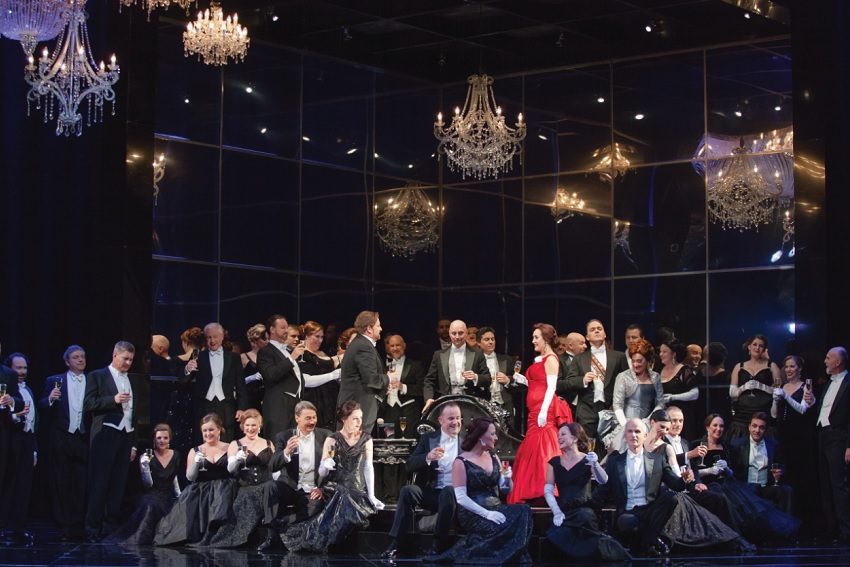State Opera of SA at a crossroads

State Opera of SA (SOSA) is poised for a new future when it appoints two new people to lead the company following the shock resignation of Timothy Sexton back in May.
Separate positions are currently being advertised for the two roles Sexton simultaneously filled since 2011, those of executive director and artistic director. For 16 years prior, Stephen Phillips effectively carried out the same two functions under the title of general manager.
The National Opera Review remarked that “SOSA is highly reliant on a very small number of key personnel whose unsustainably high workload is assessed to pose a material risk to the company”, and it is good to see that the board has dealt head-on with this following its recent review of its management structure. Conflating the two most important roles is no way to run a flagship company.
It is just amazing what State Opera has managed to achieve with chronic under-staffing right through the Phillips-Sexton era: no feat was mightier than Elke Neidhardt’s Ring Cycle in 2004. But with a team of just five staff working at its Netley warehouse headquarters six kilometres from the city centre, SOSA looks a tiny sibling to its interstate equivalents. Opera Queensland, West Australian Opera and Victorian Opera each have and prime city locations and much bigger senior management teams: eight or more including production and development managers, which SOSA lacks.
Nevertheless, things are humming along as normal down at Netley as SOSA’s finest singers — including Giséle Blanchard, Teresa La Rocca and Elizabeth Campbell — prepare for Verdi Spectacular. Behind the scenes, chair John Irving, steering the company as interim executive, has announced that “before the end of the year, the new management structure will be in place”. That will presumably include a new marketing manager, which position is also currently vacant.
So the rebuilding is well underway. Next, State Opera will have to consider how to implement the National Opera Review’s recommendations as recently backed by the federal government in September. That will be difficult as they require the company to significantly increase its box office earnings, raise more private sector income (by a minimum of $600,000), and step up its marketing effort — all against a declining subscriber base that has seen a 42 per cent decline between 2009 and 2015.
The toughest part relates to new work. The Review’s recommendations want SOSA, along with the other major opera companies, to make a much bigger commitment here but is only setting aside $200,000 between all the companies for developing and presenting new operas.
Bigger companies can cross-subsidise new work through their higher earnings, but, as the smallest company, SOSA is limited in its capacity to do this and will continue to struggle. Its record of achievement over the last 15 years is very respectable, from Jake Heggie’s Dead Man Walking in 2003 and Moby-Dick in 2011 to George Palmer’s Cloudstreet last year.

George Palmer’s Cloudstreet proved a strong success in 2016
In truth, it has done more on the chamber end of the spectrum, where costs are vastly reduced. This includes Glass’s Trilogy (twice), Elena Kats-Chernin’s Undertow, Heggie’s At the Statue of Venus, Howard Blake’s The Station, Mark Adamo’s Little Women, plus numerous other smaller in-house shows and workshop presentations at Netley and elsewhere.
Yet here the National Opera Review draws a firm line against State Opera, saying the use of venues other than the Festival Theatre is “undermining the quality of the audience experience and promoting a less professional image”. It insists that State Opera audiences “expect performances to occur in the Festival Theatre”.
That view might be mistaken. Traditional opera-goers no doubt do expect the Festival Theatre, but State Opera has cultivated additional audiences who enjoy seeing new work in non-standard venues. That has worked and should continue. Two new chamber operas in the pipeline, Anne Cawrse’s Innocence and Tim Fatchen’s Ngurunderi, which have undergone development workshops at Netley, will hopefully see the light of day under the new management.
The National Opera Review asks a tall order for State Opera. It wants the company to do all the above while simultaneously building up its touring and educational activities. Also expected is a minimum of three mainstage operas per year, not two as happened in 2015. SOSA has become rather free of late in its definition of opera, offering concert performances that are rightfully the ASO’s province (Verdi’s Requiem in 2015) and cabaret style presentations that Co-Opera already specialises in (Love, Sex and Death in this year’s Fringe).
But it’s all grist for the mill. The challenge for this proud, high achieving but over-stretched company will be how to build itself up when its level of funding is far behind its relatives. Clearly a lot more public investment is needed. Otherwise it risks lame duck status.
State Opera SA
Verdi Spectacular
Tuesday, November 21 to Wednesday, November 22
Adelaide Town Hall
saopera.sa.gov.au